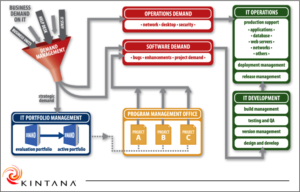This is part two of a three-post series that covers:
- Introduction – Company Stage – Culture – Lean Canvas
- Positioning Framework: Segmentation – Personas – Point of View
- Elevator Pitch – Solution – Discovery and Qualification – Sales deck – Roadmap – Enablement
- Positioning framework
It is crucial for all points of contact with your company and product to support a consistent, clear, targeted, and differentiated story. A positioning framework is a document that provides the building blocks for all the messaging, positioning, lead generation and communication activities and collateral. We want everybody in the company to be clear about which customer profiles we are going after and what story we tell. As a prospect, it’s very confusing and frustrating when the website and collateral tell a story, the sales rep tells another, and the product team tells yet a different story.
These are the components of the positioning framework document:
- Target personas, segments, value proposition
- Vision and POV (Point of View)
- Elevator pitch
- Solution description with feature/benefits
- Prospect discovery and qualification
Let’s dive into each.
Target personas, segments, value proposition
The same we have identified in the lean canvas, but with much more detail, so we can build a story.
I start by talking to the customers – existing or presumptive – to identify:
- Who they are, what their role is – while there should be a primary persona we go after, there may be multiple players involved in the process and we need to understand their profile.
- What is their job-to-get-done.
- What pains they experience in trying to get it done and how this affects them and the business.
- What impact solving the pain would have for them and their organization.
Be open to surprises in this process; ask open-ended questions, so you really understand what customers are doing and where there may be opportunities. For example, when I joined Kintana it was an Oracle migration tool company. First thing I did was talk to customers and what I discovered was that the platform was so flexible and powerful that people outside of the Oracle team used it to automate just about every process in IT. That led to a major shift in strategy, product direction, positioning, and target audience (more on this later).
Below is an example for a startup in the continuous software delivery as a service market. Notice the specificity and metrics in the value column. Don’t settle for generic statements – quantify!
| Who | Job-to-get-done | Pain and Impact | Value of Solution |
| Dev
VP Dev |
Quickly reproduce, diagnose and fix production bug
Deploy software that doesn’t break production – ensuring customer satisfaction and uptime |
Testing environment does not match production and bugs are introduced and are difficult to reproduce and diagnose. Also difficult or impossible to quickly roll-back changes. Customers and the business are mad. Bad company image. | Decrease by 80% number of bugs due to differences between testing and production environments.
Decrease by 50% the time it takes to reproduce a production bug. Market and thought leadership. |
| Dev Mgr, DevOps Mgr, CTO | Keep dev resources focused on new features and enhancements that move the business forward | Lots of time spent by the best software developers on inefficient ops tasks: provisioning test environments, writing scripts, waiting for resources… | Accelerate development cycles – 30% more features/enhancements. Happier developers. More productive teams. |
| GM, VP Products | Stay ahead of competition with a nimble s/w machine that rapidly creates and evolves apps | Operating in silos (dev, QA, dev ops,IT ops…) and with disjointed processes and tools. CI and CD are a great idea but they are very hard to setup and manage. Company is lagging behind and slow to respond. | Cut by 30-50% the time to integrate, test, and deploy software releases by automating the setup and management of continuous integration and deployment |
In this example the development manager, devops manager, and CTO are the main decision makers, but the GM, VP of Development, and VP of Products can be great influencers. In addition, devops staff and developers must embrace the solution, so it must meet their needs.
For a clear segmentation we want to identify the characteristics of the organizations we want to go after, the type of company they are part of, the job titles of the personas we are targeting, and their psychographics (their psychological traits).
Again, an example for a startup in the continuous software delivery as a service market:
| Organization | R&D Team Size >20
Developing mobile, web, IoT applications Striving for continuous integration and delivery of high-quality software Working with complex, multi-component apps Frequent deployments (3+ month) Using Selenium, GitHub, AWS for production |
| Company Type | Industry: ISV, High Tech, Hospitality, Retail, Telco, SI/Consulting, MSP
Company Size: 500+ for non ISVs, 100+ for ISVs Geo: North America, Israeli ISV Longer Term Targets: Regulated (Financial Services, Health Care) |
| Titles | Primary: Development Manager, DevOps Manager, CTO
Secondary: IT Ops Manager, QA Manager |
| Psychographics | Early Adopter Visionary Innovator Influencer |
Vision and POV (Point of View)
A compelling story is not just about product functionality and benefits; it must include a strong vision and a clear point of view. Customers love to join a vendor on a journey towards a vision. Nobody can have all the functionality from day one, so articulating the aim of the journey is key for customers to enroll themselves in that journey and help us get there.
If we do not claim our own point of view, the competition will gladly do it for us and that’s deadly. When vendors just talk about features, they put themselves in a constant feature race with their competitors. If they can articulate the business value of their vision and make clear what is possible with their offering that would not be possible otherwise; the game changes completely and the competitors are left on the defensive.
The vision and POV must convey a compelling business value and must also be emotionally engaging.
At Kintana, after many iterations, and tests, we ended up creating the category of IT Governance and focusing our POV on the need for IT to prioritize the most important initiatives for their business impact, provide transparency, and execute flawlessly. The key here was to call out the need for IT demand management and tie it into project and portfolio management. Nobody was doing that at the time. What made the POV stick was the infographic we created to depict the process. It was so spot-on that industry analysts adopted it and people in IT used it to explain their vision and plan. The result was that not only we survived the dotcom bubble, we also had a successful acquisition by Mercury Interactive.
Other great examples are some of the GoToMeeting ad campaigns. They were about what was possible to accomplish with web video meetings. Supporting innovators in making a difference and building trust.
##########
The next blog in this three-post series covers:


Leave a Reply